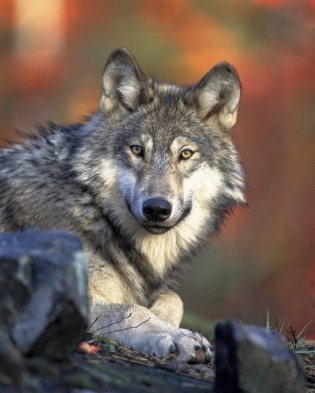This is a reposting from 2006, prompted by a post by Surber about the dramatic resurgence of the wolf populations in the northern Rockies. Also related to the Crichton video posted today.
 The ways that ecological interactions take place is always fascinating to me, and unpredictable. The return of wolves to Yellowstone Park is a case study.
The ways that ecological interactions take place is always fascinating to me, and unpredictable. The return of wolves to Yellowstone Park is a case study.
Wolves kill more elk, balancing the elk population and driving the elk to safe zones, thus permitting the return of normal willow growth along river edges, thus cooling and stabilizing rivers resulting in bigger trout, and happy songbirds, and generally more biodiversity. And the wolves kill coyotes, thus there are more fox and mice and little critters, and more and happier hawks. Sadly, a parvovirus from domestic dogs threatens the 170 Yellowstone wolves. I guess no-one brought them in for their shots.
"Apex predators" are a key piece of any ecological puzzle. I'd like to see our native Timber Wolf returned to New England, along with the Elk who used to live in the Northeast. It would solve the deer infestation and the coyote infestation, and might reduce the number of cats and dopey little ankle-biter dogs in suburbia, too. Politically, it might be tough - can you imagine running for state office with a campaign promise to return wolves to Pittsfield, MA? But maybe they will come under their own steam, the way the coyotes did - which were never native to the Northeast and which cannot take on a whitetail deer.
Story in the Science Times. A Wolf website here.


 The ways that ecological interactions take place is always fascinating to me, and unpredictable. The return of wolves to Yellowstone Park is a case study.
The ways that ecological interactions take place is always fascinating to me, and unpredictable. The return of wolves to Yellowstone Park is a case study.